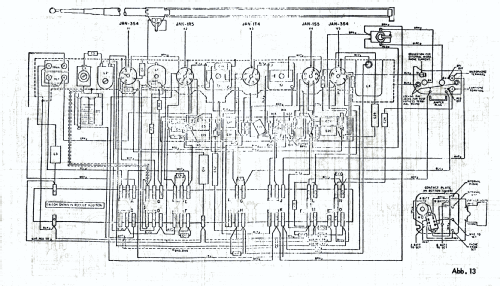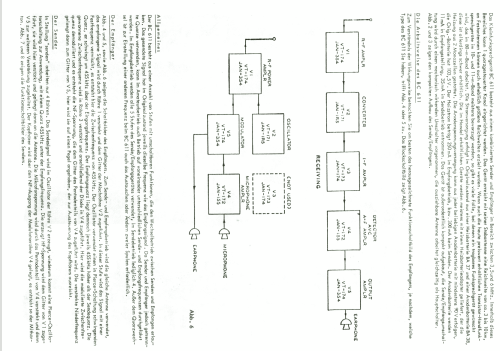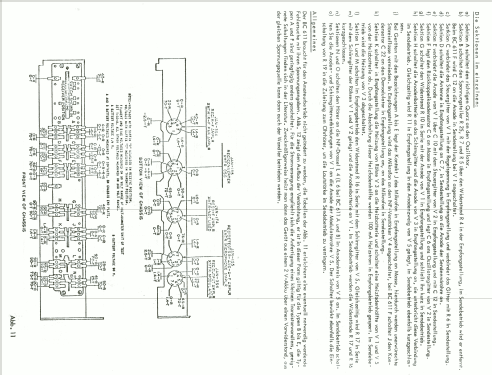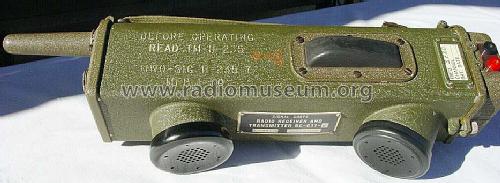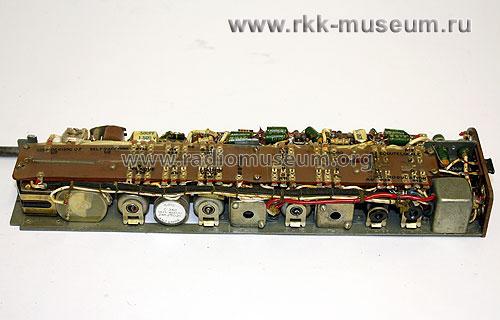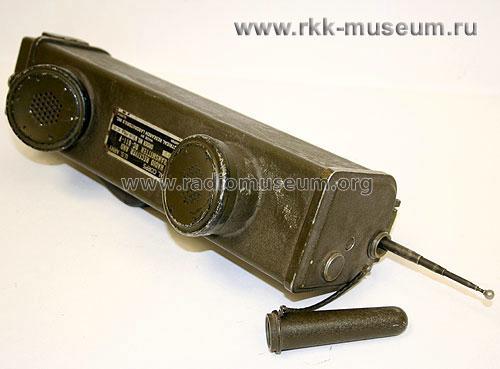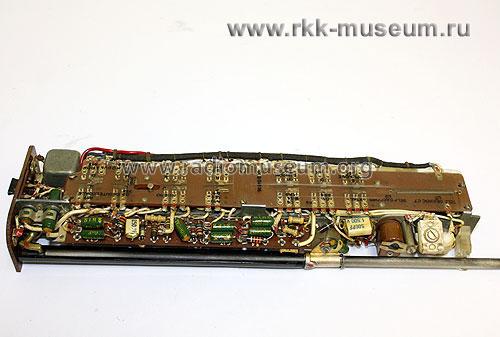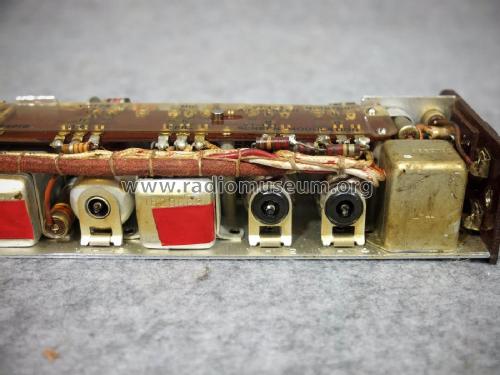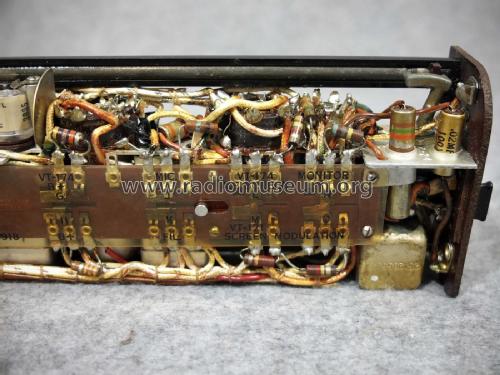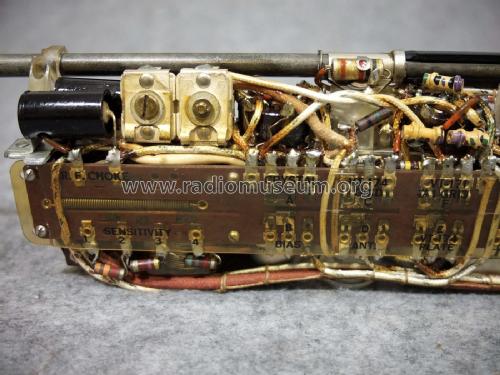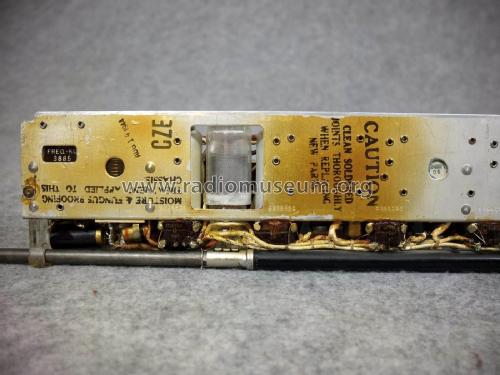SCR-536 Radio Set BC-611 (Variants A, B, C, D, E and F)
MILITARY U.S. (different makers for same model)
- Produttore / Marca
- MILITARY U.S. (different makers for same model)
- Anno
- 1941–1956
- Categoria
- Ricetrasmettitore militare
- Radiomuseum.org ID
- 71779
Clicca sulla miniatura dello schema per richiederlo come documento gratuito.
- Numero di tubi
- 5
- Principio generale
- Ricetrasmettitore; ZF/IF 455 kHz
- Gamme d'onda
- Gamme d'onda nelle note.
- Tensioni di funzionamento
- Batterie (di accumulatori e/o a secco) / 1.5/103.5 Volt
- Altoparlante
- AP magnetodinamico (magnete permanente e bobina mobile)
- Materiali
- Mobile di metallo
- Radiomuseum.org
- Modello: SCR-536 Radio Set BC-611 - MILITARY U.S. different makers
- Forma
- Diverse forme (descritte nelle note).
- Dimensioni (LxAxP)
- 80 x 320 x 90 mm / 3.1 x 12.6 x 3.5 inch
- Annotazioni
- The first ever made AM "Handy-Talky", for the US-Service. One channel xtal-operation in the range 3.5 - 5.995 MHz. Variants -A to -F. Another part of SCR-536 is the Box BX-49, containing components for 12 different frequencies or "channels". In chest CH-233 all 50 official channel-components were multiple available in 2 boxes. After channel-changing, realignment with Test Set IE-17 was needed. The official channel 3885 kHz was often used by Amercian hams, but in Europe suitable x-tals for lower frequencies had to be applied. The given weight is inclusive the 0,75 kg. batteries.
See also the Swiss Army variant FOX SE-100, the French variant or the Case CH-312 from Munston.
- Peso netto
- 2.5 kg / 5 lb 8.1 oz (5.507 lb)
- Letteratura / Schemi (1)
- -- Original-techn. papers. (TM11-265 dated 1945. TM11-4019 dated 1945.)
- Letteratura / Schemi (2)
- The Surplus Handbook - Receivers and Transmitters (page 31-32)
- Autore
- Modello inviato da un iscritto da D. Utilizzare "Proponi modifica" per inviare ulteriori dati.
- Altri modelli
-
In questo link sono elencati 408 modelli, di cui 360 con immagini e 215 con schemi.
Elenco delle radio e altri apparecchi della MILITARY U.S. (different makers for same model)
Collezioni
Il modello SCR-536 Radio Set fa parte delle collezioni dei seguenti membri.
Musei
Il modello SCR-536 Radio Set può essere visto nei seguenti musei.
Discussioni nel forum su questo modello: MILITARY U.S.: SCR-536 Radio Set BC-611
Argomenti: 2 | Articoli: 3
Die Entwicklung begann 1941 und lag in den Händen der Fa. Motorola. Siehe auch GFGF-Funkgeschichte Nr. 140, Seite 279ff. (Nov./Dez. 2001).
Eilert Menke, 18.Jun.04








